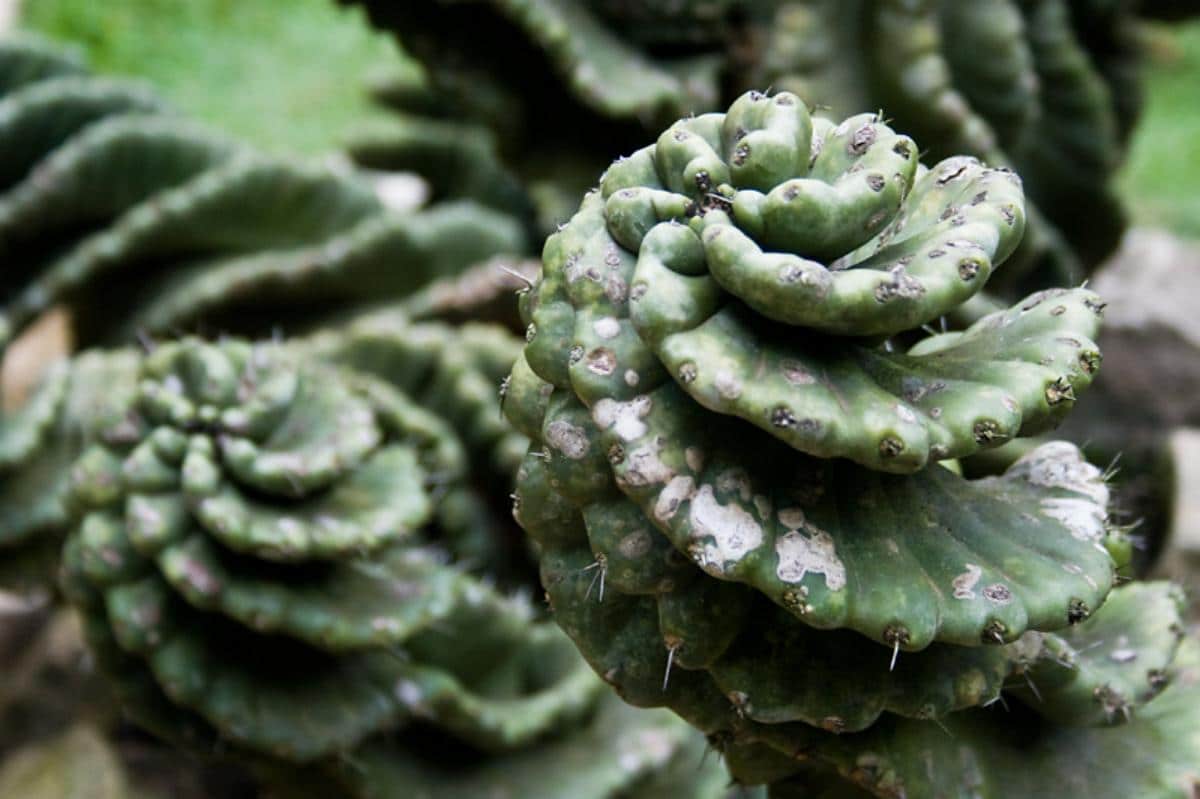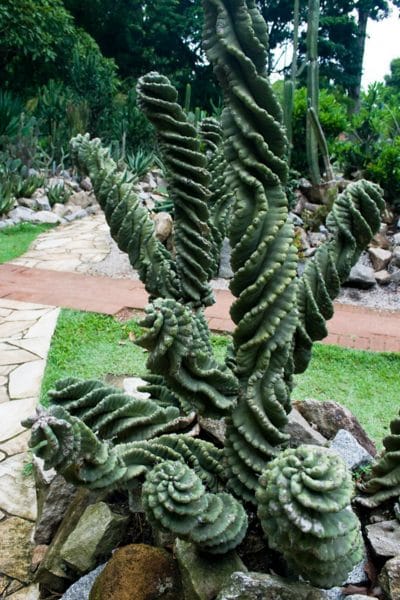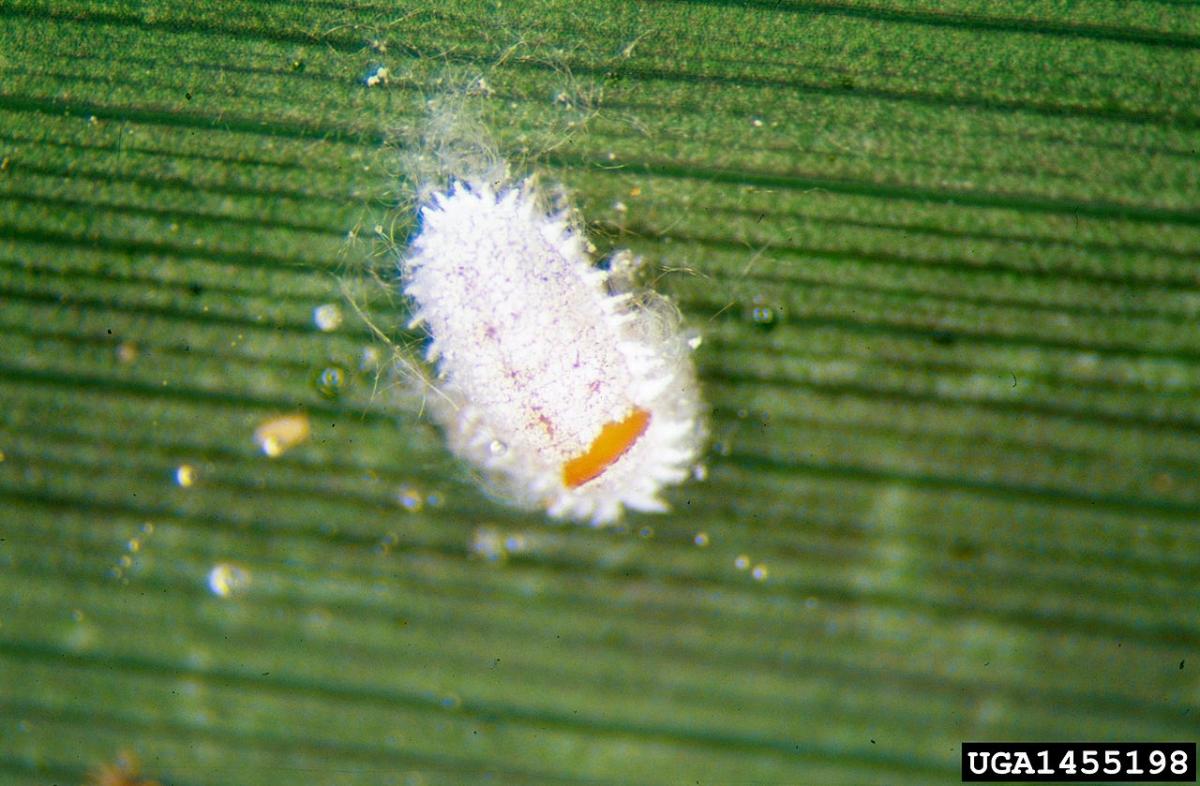
Image - Flickr / Chantal Wagner Kornin
The spiral cactus is an exotic plant, reasonably fast growing and also has very pretty flowers. It can be grown in pots without problems, although in a rockery with other succulents it will also beautify the place a lot.
But if there is something we should know when purchasing a specimen, it is that it is very sensitive to excess water. For this reason, it will be important to choose a light substrate, which filters the precious liquid quickly, and water only when necessary.
Origin and characteristics of the spiral cactus
Where does the spiral cactus come from? Is it the work of humans? Well, let's start at the beginning. The scientific name of this plant is Cereus forbesii cv Spiralis; that is, it is a cultivar of the species C. forbesii. A cultivar is a plant that has been artificially selected to maintain some characteristic that attracts attention, in this case, the spiral shape.
The type species, that is, the Cereus forbesii It is native to South America, specifically Argentina and Bolivia. It reaches 7 meters in height, and has a stem which measures about 40 centimeters in diameter.. Thorns sprout from its areolas which, in the case of our protagonist, are very short. The flowers are white, with a length of up to 20 centimeters.
Spiral cactus care

Image - Flickr / Chantal Wagner Kornin
To take care of the spiral cactus it is necessary to have some things to make sure that it will not miss anything, such as a pot with holes in its base, a substrate that facilitates the drainage of water and a watering can. But also, it is important that the climate is mild, since moderate frosts hurt.
So, we are going to see in detail how this succulent plant is cared for, and what measures we should take if problems arise:
Climate and location
The climate, as we said, has to be rather mild or warm. It supports the cold, but frost, especially if it is accompanied by snow, can be fatal for it, especially if it is young. In fact, If the temperature drops below -2ºC, it is best to keep it indoors., at least until the winter is over.
If we talk about the location where we should put it, it has to be bright. You do not need to be in direct sunlight as long as you are setting in an area where it is very bright. Now, we do recommend getting it used little by little to direct exposure of the star king, since that way it will grow something better, with more force.
Now, if it is kept indoors, we will put it in a room where there is also a lot of clarity, but away from drafts.
Soil or substrate
- Garden: the garden soil must have good drainage. If not, a 1 x 1 meter hole would have to be dug and filled with substrate such as pumice (for sale here). This will prevent the roots from rotting.
- Flower pot: in the same way, if it is grown in a container it is important that the substrate is adequate, such as pomx or peat mixed with perlite (for sale here) in equal parts.
Irrigation
Generally, it will be watered little. You have to let the soil dry between one watering and the next, since otherwise we would run the risk of the roots rotting. Also, when watering we do not have to wet the plant, as it could rot.
In case it is potted, do not put a plate underneath. The water that is not absorbed by the earth will end up in it, stagnant. Thus, the plant would continue to have "wet feet" and would soon rot. And that is not to mention that the fungi would weaken it more and more.
Subscriber
It is interesting that, if it is grown in a pot, it is fertilized with a liquid cactus fertilizer (for sale here) or granulate. We will follow the indications so that everything goes well, in spring and summer; although it could also be paid in autumn if the climate in the area is warm.
Multiplication
The spiral cactus multiplied by stem cuttings. It is a plant that, over the years, comes to branch. Thus, in spring we will cut a stem of about 20 centimeters and leave it in a cool area, protected from the sun, for a week. During that time, the wound will dry out and heal, which will help it root.
Then, we will plant it in a pot with holes filled with pumice, small volcanic clay (1-3mm thick), or akadama. It is important that we bury it a little, approximately 3 centimeters, and water. At the end, we will put it in semi-shade.
Another option is to multiply it by seeds, also in spring or summer. They are planted in seedbeds with cactus soil, and are kept in semi-shade.
Plagues and diseases

Image - Wikimedia / Whitney Cranshaw
Basically, you can get attacked by: mealybugs, snails o slugs, and if we talk about diseases of rust or other pathogenic fungi that live in the soil, such as phytophthora.
They are treated like this:
- Mealybugs: diatomaceous earth is very useful and effective (for sale here). You just have to throw it over and wait. The next day there will probably be no more plague.
- Snails or slugs: you can use Home Remedies Like filling a container with beer for example, but if there are domestic animals it is preferable to protect the cactus with a wire net or putting the plant in the house until the rains pass.
- Mushrooms: both rust and other fungi are moisture-loving microorganisms, so watering must be suspended and the plant treated with fungicides.
Rusticity
The spiral cactus supports up to -2ºC.
Where to buy a spiral cactus?
If you want one, feel free to get it from here:
